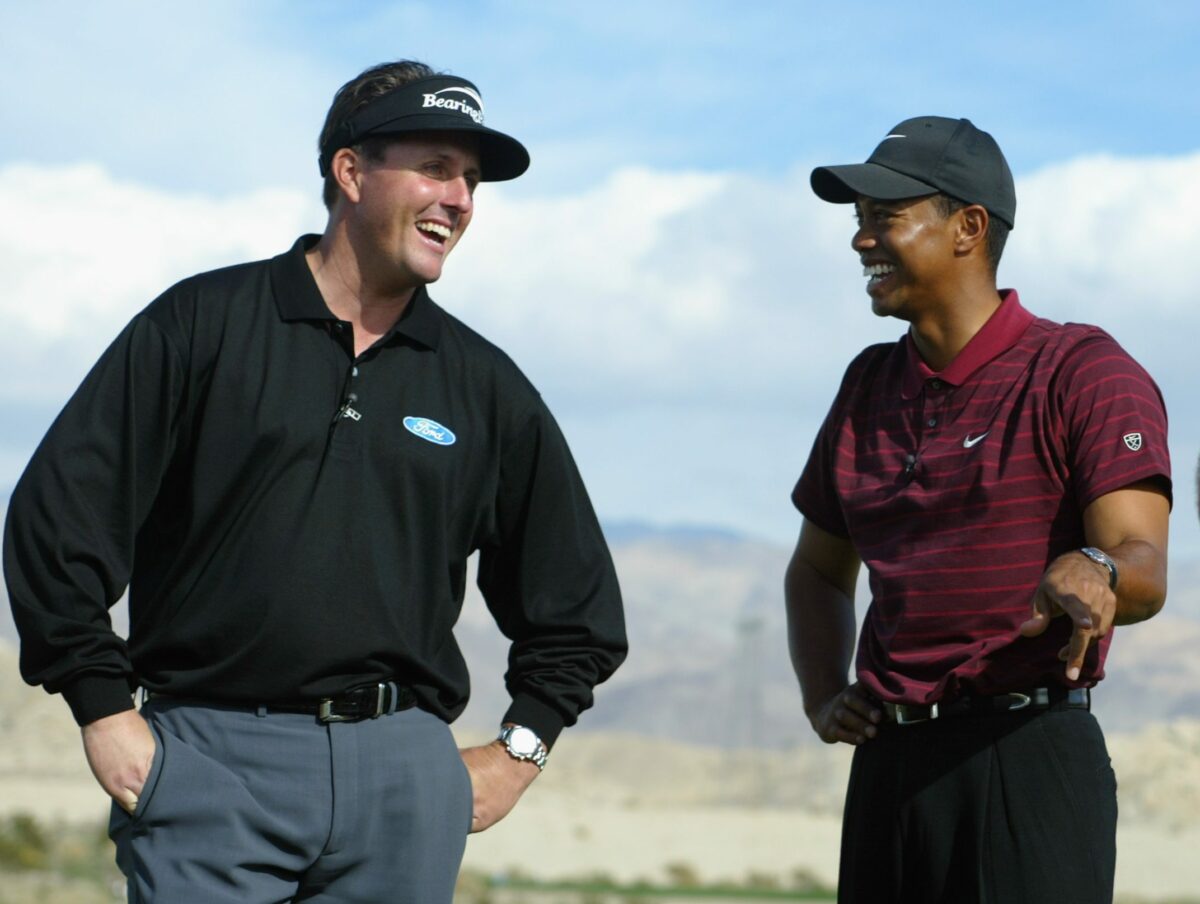Wherever it is that Phil Mickelson is laying low this week, he must be thinking, “if only I hadn’t called Alan Shipnuck.”
Without Mickelson opening his big mouth and telling his unvarnished thoughts on the Saudis behind a renegade golf league (“scary motherf—–s”), Shipnuck still would have produced a read that is a rollicking good time, but it wouldn’t be the talk of the town – and Phil likely wouldn’t be skipping his title defense of this week’s PGA Championship and on sabbatical from what has been a Hall of Fame career.
Who is the real Phil Mickelson? Phil: The Rip-Roaring (and unauthorized) Biography of Golf’s Most Colorful Superstar seeks that answer. Shipnuck, longtime golf writer for Sports Illustrated and Golf and now a partner in the Firepit Collective, reflects back to something Mickelson said to him during a confrontation that he highlights in the book’s introduction. “It was meant as a taunt but became the challenge that animated this book: ‘You think you know me but you don’t.’”
Think about it: for as much Phil has spent the last 30+ years under a microscope he’s done a masterful job of protecting his private life. We’ve never seen him play golf with any of his kids. Everything about Phil that he shares has felt very calculated, as Shipnuck notes even his psoriatic arthritis diagnosis netted him an endorsement opportunity.
Shipnuck paints Phil as “a smart-ass who built an empire on being the consummate professional; a loving husband dogged by salacious rumors; a gambler who knows the house always wins but can’t help himself, anyway; an intensely private person who loves to talk about himself.”
He’s always been the proverbial riddle wrapped in a mystery inside an enigma. But by the time you finish this page-turner you’ll have a better idea who you think Phil is. I suspect Phil’s fan base will find reasons anew to adore him even more while his detractors will find fresh ammo to argue that he’s one of the all-time phonies.
The opening chapter sets a wonderful pace going from one outrageous story to another – it feels like Shipnuck gathered a bunch of Phil’s acquaintances around a campfire and they’re dishing their best of collection of Phil tales and said, ‘I can top that.’
My favorite part of the book may be the early chapters before Phil turned pro. Kudos to Shipnuck for tracking down childhood friends and college pals and presenting popped-collar Phil in all his frat-boy glory for some fresh stories of beer-swilling, money games and competitions, egos and envy before Phil really became Phil.
Shipnuck takes us inside the highs and lows of his PGA Tour career, and is at his best in the section on Mickelson’s collapse at Winged Foot, but short-changed his stunning victory at age 50 in the 2021 PGA Championship. That chapter is a mere six pages.
The book is a breezy read, weighing in at just 239 pages. You know how you go to a movie you really wanted to see and you leave wishing they had cut out at least 45 minutes (I’m looking at you, latest James Bond flick)? Well, Shipnuck’s Phil bio is the opposite. He easily could’ve written another 50, 75, dare I say 100 more pages and readers surely would have eaten them up like cat nip. In short, we didn’t get our fill of Phil.
Who is Phil? Shipnuck presents both the good and bad and leaves it to the reader to decide where they come out in the end. Leave it to two of his longtime Tour breathren to describe him best: “People ask me what he’s like,” says Brian Gay, “and I say, ‘If you ask Phil Mickelson what time it is he’ll tell you how to build a watch.’ ”
And then there’s Stewart Cink: “There are so many stories, but they all have one thing in common: juice. Doesn’t matter what form the juice takes. Needling in the locker room is juice. Money games during practice rounds is juice. Trying to pull off crazy shots with a tournament on the line is definitely juice. Criticizing Tiger’s equipment when he’s on a historic run is a lot of things, but it’s also juice. Phil loves math and computations, and where that stuff meets juice is Vegas, so of course Phil loves it there. When you know you don’t have an advantage, but you still want to bet large amounts? That’s juice. Phil is an all-time juice guy.”
While the juiciest material already has been squeezed out and released in excerpts, this book has plenty of juice. I’m still not convinced Shipnuck got to the bottom of the parting of Phil and Bones after 25 years together, but at least Shipnuck called as he put it, “B.S.” and advanced the story. It’s a second-hand quote – as Bones didn’t participate directly in the book either – but this shot from Bones is telling nonetheless.
“Nobody knows Phil Mickelson. Nobody. I spent 25 years standing next to the guy and he’s still a total mystery to me.”
After all these years, Phil revealed too much of his inner thoughts when he phoned Shipnuck in November and spouted off about the Saudis, Jay Monahan and his true feelings about the inner workings of the PGA Tour. But as Shipnuck concludes, Phil is no stranger to controversy. “Somehow he always emerges with his vast fan base intact. Sports fans love a comeback and a redemption story. A more humble, more human, less cartoonish Mickelson figures to be more popular than ever. Come what may, he will survive, because he survives everything.”
What will Phil do next? The way he eventually handles the fall out of his inflammatory comments may shape his legacy in the game and reveal once and for all, who is Phil.
[vertical-gallery id=778047768]
[mm-video type=playlist id=01es6rjnsp3c84zkm6 player_id=01evcfxp4q8949fs1e image=https://golfweek.usatoday.com/wp-content/plugins/mm-video/images/playlist-icon.png]


